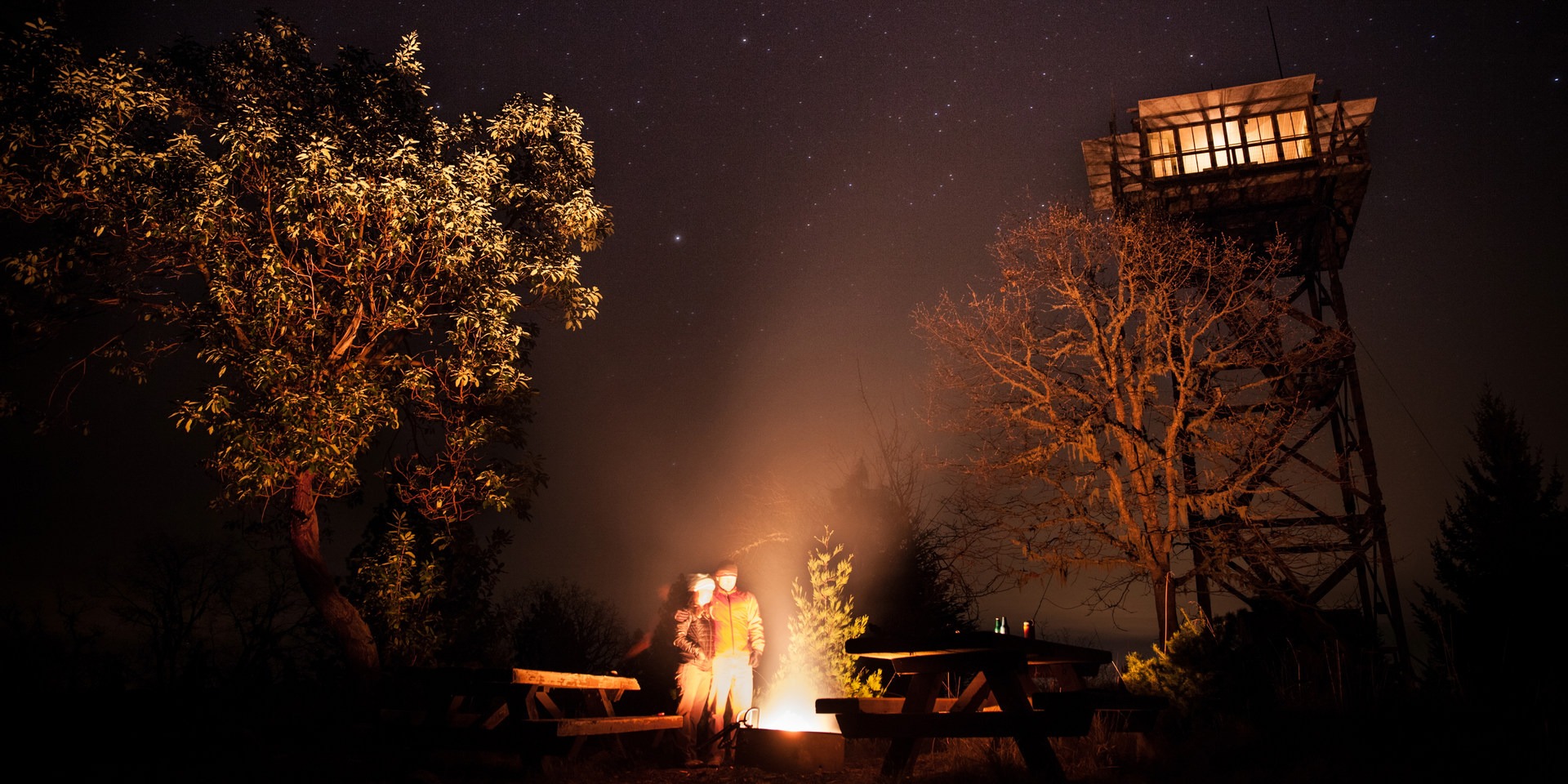You are here
Now that summer is upon us, it’s hard to think of a place we would rather be than sitting around a campfire after a long day spent outdoors. Whether you are roasting marshmallows or using it for warmth, a campfire is a nostalgic symbol of comfort while you're spending the night under the stars.
Camping season is unfortunately also wildfire season, however. Forest fires are frequently started by a poorly tended or illegal campfire, and if you love sitting next to a fire out in the woods, it’s important that you know your campfire basics.
Know the burn danger
When you prepare for a camping trip and know you would like to have a fire, look up the conditions for your region and research the possibility of severe fires. You can get a general idea by checking in here, but it’s not a bad idea to call the local Forest Service or other land agency in charge of where you are going. Wind, heat, time since the last precipitation and lack of humidity are all things that can affect whether or not you should be burning in the first place. Also, if permits are required, do the right thing and pick one up even if it costs you a few bucks.
If You Need a Campfire, Carefully Prepare Your Site
There is a lot to be said for choosing to forego a campfire if you are outside of a campsite with a designated fire area. The fact of the matter is that campfires are not only potentially hazardous given fire dangers, they can leave scars on the landscape that last for years. Given innovations with gear, clothing, and light sources, the campfire that once was a necessity is now looking more and more like an indulgence, and it is worth asking yourself if the indulgence is worth the impact you're making on the places that you love to recreate.
If you do decide to have a campfire, site selection is vital for reducing your impact, and picking a good spot is key in campfire safety. Find a flat spot that is away from the base of a hill or any overhanging branches. Rogue fires can travel uphill very quickly. It’s best to burn close to a large water source, but you should also have a bucket or pot of water on hand in case of emergency. Before building the fire, clear a circle within 10 feet of your burning area down to bare dirt by raking pine needles, leaves, and other flammable items away from the flames. Always use existing fire rings when possible, and check out the Leave No Trace "4 D's" regarding gathering wood.
Never Leave a Fire Unattended
This one seems like a no-brainer, but is often the root cause of most accidents. Don’t even leave it for a few minutes to collect wood or sleep, even if you like the idea of waking up to warm coals.
Make sure it is all the way out
When you go to sleep or leave your campsite, it’s important to douse and stir your coals until they are cool to the touch. Start this a half hour before your sleep or leave the campsite, and never allow your fire to burn down on its own. Separate logs and coals while dousing, and dirt can also be used to smother the embers. Also, be aware of what is called “duff,” the layer of decomposing wood material that lies between bare dirt and the first layer of pine needles or other debris. It looks like dirt, but it can smolder for days. If some of this is caught in your fire, rake it out to double check it’s completely cool.
Keep your fire small
Avoid using fuel for those big flames and don’t let the fire get too large. The best cooking (and marshmallow roasting!) is done on the coals, anyway.
Know the cost
If your fire gets out of hand, you will be personally liable for any damages and suppression efforts. Forest fires can cost millions, so keep that in mind if you start thinking about skipping any of the important steps above.





Comments
Sign In and share them.